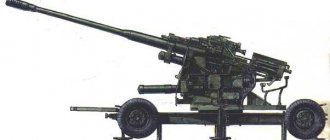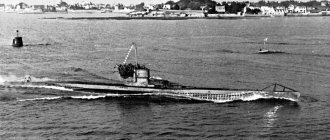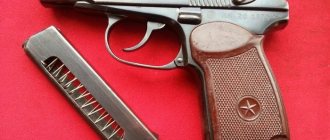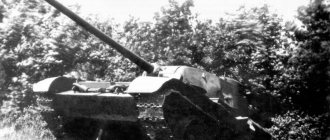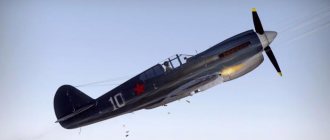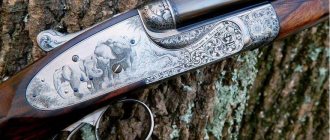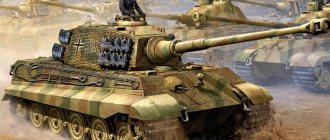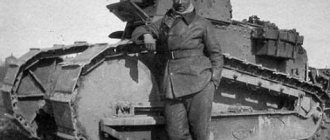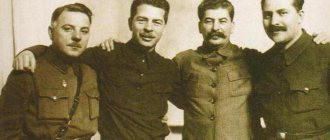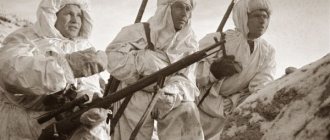Author: Dimon
24 February 2022 20:11
Tags: weapons educational top 10
8682
11
It’s not for nothing that artillery is called the “god of war.” A hail of shells suddenly delivers a powerful blow that cannot be achieved by any other means. A plane with bombs can be seen from afar. A sapper with a box of explosives can be stopped by a banal infantry patrol. But a shot from a cannon is fast, powerful and almost inevitable.
0
See all photos in the gallery
Of course, engineers will always try to make shells as powerful as possible and guns as long-range as possible. These problems can be solved head-on by simply increasing the size. A longer barrel allows for greater shooting range. A larger diameter (caliber) projectile can contain more explosives. Despite the development of rocket technology, artillery systems with a caliber of up to 420 mm are still in service. But the biggest guns have always been “piece products” and even had their own names. We present to you the 10 largest guns in the world - fearsome giants of military equipment.
Schneider howitzer model 1916 (520 mm)
0
×
The 520 mm Obusier Mle 1916 rail-mounted mobile artillery system (better known as the "Schneider howitzer") was developed and built in France at the height of the First World War. Projectiles weighing about one and a half tons were supposed to be sent at a distance of up to 15 km. Despite the fact that two copies of the gun were built, they almost never took part in combat operations. The barrel of the first gun exploded during testing, and in 1941, during an attempt to shell Leningrad by Nazi troops, the second gun also collapsed.
2B1 "Oka"
The development of this self-propelled gun began on November 18, 1955, due to a resolution of the Council of Ministers. The main idea was to create a mobile unit capable of firing tactical nuclear warheads, since at that time the USSR had such weapons that strategists could not determine the method of delivering them to the final enemy. This self-propelled mortar had the following characteristics:
- caliber - 420 mm, barrel length reached 20 meters;
- weight - 55 tons;
- the crew is 7 people, but during the march only the driver is inside, the rest travel in a separate vehicle, as well as the ammunition.
A total of four prototypes were produced, and all of them even took part in the parade on Red Square. The chassis was created on the basis of the T-10 (IS-8) heavy tank. Subsequently, during field tests, the main drawback of the Oka was revealed, namely, the huge recoil, due to which the gun rolled back five meters after firing, which turned out to be unacceptable. Due to the fact that loading took place from the breech of the gun, the rate of fire was increased to 1 shot per 5 minutes.
However, even such characteristics did not satisfy the commission, and it was decided to abandon the project. At that time, mobile tactical missile systems, like the 2K6 Luna and the like, were already considered more promising, whose total power easily exceeded the potential of the 2B1 Oka.
Karl (600 mm)
0
At the end of the 30s of the 20th century, Germany was actively preparing for a new war. Potential opponents, seeing full well where things were headed, became concerned with building titanic earthen and concrete fortifications along their borders. To break into fortified areas, German engineering talent created self-propelled artillery mounts with medieval shell parameters quite consistent with the nature of the fortifications. In particular, self-propelled mortars "Karl" with calibers of 540 mm and 600 mm fired at a distance of about 4 km with shells weighing 2 tons. A total of seven units were built on a tracked chassis. All of them received their own names - the names of the ancient Norman deities.
Killer mini-machine gun
The compact UMP submachine gun from the German concern Heckler & Koch is available in three versions - chambered for different cartridges. The most powerful - UMP 45 - is equipped with .45 ACP ammunition (11.43x23 millimeters). It combines high stopping power of a bullet, moderate recoil and high accuracy of fire. The UMP 45 has an impressive rate of fire - about 600 rounds per minute, and when loaded it weighs relatively little - 2.5 kilograms. Firing range is a standard distance for submachine guns of 100-150 meters.
| H&K UMP .45 submachine gun (Germany). |
| Source: CC BY-SA 3.0 / Asams10 / |
The UMP 45 is used primarily by special police forces in a number of countries. Cartridge 45. ACP has a good stopping effect, but rather weak penetration. Therefore, shooting at well-protected targets from this submachine gun is ineffective. At the same time, the UMP is ideal for combat in urban environments or on buildings - its light weight, modest dimensions and ample opportunities for tuning make it indispensable when working in tight spaces.
Basilica (600 mm)
0
In the middle of the 15th century, the Turks, besieging Constantinople, faced a problem. The walls of the ancient fortress were completely impregnable for infantry. Primitive artillery left minor gouges on the stones, and the dense fire of the city’s defenders did not allow a mine to be placed under the walls. Inspired by necessity, the Hungarian engineer Urban designed and cast in bronze a siege weapon weighing 30 tons in just a few months. The cannon, called "Basilica", had a caliber of about 550-600 mm and fired stone cannonballs weighing 500-600 kg at a range of up to 2 km. The cannon showed its effectiveness, breaking through a century-old wall with several accurate shots. Unfortunately, the example of an engineering genius was destroyed during further shooting. However, in the museum of Fort Nelson (England) there is a “younger sister” of the Basilica, presented by the Turks to Queen Victoria.
Large caliber: 5 most popular models of small arms
The issue of large-caliber firearms has been of concern to military engineers and experts for a very long time, because they not only have an increased firing range and stopping effect, but also greater penetrating power, effective when fighting armored targets in modern combat conditions. Today we will talk about the most popular models of large-caliber weapons, as well as their pros and cons.
The content of the article
Large caliber: 5 most popular models of small arms
Pistol: Desert Eagle
This .50 caliber pistol is probably familiar to all fans of computer shooters and American action films. Thanks to the .50 Action Express cartridge used in it, it is one of the most powerful pistols in the world (although, in truth, it is worth noting that the Desert Eagle is also produced in other, smaller calibers, but we are not talking about them now).
Despite the terrifying militaristic appearance, the origin of this pistol is purely hunting, because it was developed as a secondary weapon, intended for defense against large predators. And it is worth noting that he can cope with this task with a bang - his blunt-pointed 20-gram bullet with a high initial speed has a huge stopping effect, quite sufficient to instantly stop an attacking bear at a short distance.
As for military use, the Desert Eagle has not found wide popularity. And there are a number of reasons for this. Firstly, it is its weight - even when unloaded, it weighs almost 2 kilograms, which is extremely high for a pistol that is constantly carried. Secondly, its recoil requires concentration during each shot, since weak or incorrect hold may well result in injury. Thirdly, this pistol has very large dimensions, including an oversized handle, which is convenient for a very limited number of shooters. True, despite this, the Desert Eagle is still used in a number of units, for example, in the Portuguese special forces Grupo de Operações Especiais and the Polish GROM detachment.
Submachine gun: UMP-45
The German company Heckler & Koch produces the UMP submachine gun in various versions and chambered for different cartridges. Its most powerful version is the UMP-45 - a submachine gun chambered for the .45 ACP cartridge (in the domestic version - 11.43x23 mm). It combines a high rate of fire - up to 600 rounds in 1 minute, good accuracy of fire and a practical lethal range of up to 200 meters. With all this, the UMP 45 weighs a little - only 2.5 kg.
This submachine gun is used mainly by police units and special forces in a number of countries. Thanks to its large caliber and good stopping power, it does an excellent job of defeating unprotected and lightly armored targets in urban combat or counter-terrorism operations.
Automatic: ASH-12
This assault rifle was developed by the domestic TsKIB SOO specifically as a weapon for “clearing” premises, and in 2011 it entered service with the FSB special forces. Especially for this machine gun, a rifle cartridge of 12.7x55 mm caliber, designated STs-130, was developed practically from scratch. This cartridge can be equipped with a variety of bullets, which include armor-piercing, full-jacket, tandem (two-bullet), and many others. Thanks to the combination of high penetration power and stopping power, the ASh-12 is an extremely effective urban combat weapon for shooting at medium and short distances.
The machine gun itself was built according to the bullpup design (in which its trigger and fire control handle are moved forward, behind the firing mechanism and magazine). Shooting from the ASh-12 can be carried out either in single shots or in bursts (the high accuracy of which is precisely ensured by the bullpup scheme). The maximum rate of fire of the weapon is 650 rounds per minute, and the machine gun with a total weight of 6 kg is equipped with box magazines for 10 or 20 rounds.
Sniper rifle: Truvelo SR
There are now a large number of large-caliber sniper rifles on the world market (which in the domestic version are often classified as counter-sniper rifles). But at the same time, few of them can boast of a caliber as large as that of the Truvelo SR rifle, namely 20*110 mm. Initially developed in Spain, this cartridge was intended for use in light anti-aircraft guns (that is, in fact, it was not even a cartridge, but an artillery shell). But craftsmen from South Africa, having assessed its potential, were able to develop a long-range sniper rifle for this cartridge.
The “working” range for the Truvelo SR is 2 km, and in the hands of a skilled sniper it can be even greater. At this distance, the rifle is capable of penetrating body armor of any protection class, as well as disabling an armored personnel carrier or other lightly armored vehicle. True, despite such impressive characteristics, this weapon also has a number of disadvantages. Firstly, it is single-shot, which may not be very convenient in some situations. Secondly, the total weight of the rifle is 25 kg, to which is also added the weight of the steel tripod that serves as a support when shooting (its weight is 10 kg). As you can imagine, even two people can have trouble moving this rifle quickly from position to position. Thirdly, its length exceeds 2 meters, which also adds complexity both when moving and when quickly camouflaging this weapon.
Machine gun: "Kord"
The Kord machine gun is one of the most important arguments of Russian infantry in the fight against enemy manpower and lightly armored vehicles. Developed in the 90s, Kord became a replacement for its predecessor, the Utes machine gun, while surpassing it in all characteristics - rate of fire, accuracy and compactness. In addition, this machine gun has an extremely low weight for such a weapon - only 25 kg. The loaded belt for 50 rounds of 12.7*108 mm caliber is also light - 7.7 kg, the bipod - 7 kg and the tripod-machine - 16 kg. For comparison, the Browning M2 machine gun, still in service with the US Army, weighs more than 60 kg with the machine.
“Kord” is intended to destroy manpower and equipment with weak armor at distances of up to 2 km, as well as to fire at flying aircraft and helicopters at altitudes of up to 1.5 km. To increase shooting accuracy and the ability to fight at any time of the day, the machine gun can be equipped with both an optical sight and a night vision complex.
Mad Greta (660 mm)
0
Already during the decline of the Roman Empire, either at the end of the 14th or in the middle of the 15th century, one of the remarkable cannons was built in Belgium. “Dulle Griet” with a caliber of 660 mm has a mass of 16 tons and a quite decent cannon barrel with a length of about 5 m. Yes, it “has” - the cannon has fought quite a lot, but despite all the quirks of fate, it has survived to this day. Today it is the largest forged muzzle-loading gun preserved in museums.
Saint-Chamond
The First World War served as a powerful impetus for the development of large-caliber weapons. So, in 1914, the largest arms companies in France received an order to create some of the largest guns in the world. Among these was a 400-millimeter howitzer from Saint-Chamon. Its mass in combat position was as much as 137 tons and it moved on a special ten-axle railway platform. The shooting was carried out with high-explosive shells weighing 641 kilograms.
The initial speed of the projectile was rather high - 531 meters per second. The firing range was also impressive - 16.1 kilometers.
Lazy Metta (735 mm)
0
At the beginning of the 15th century, the German master Henning Bussenschutte designed a bombard weighing about 9 tons. The gun, nicknamed the “Lazy Mette” (Faule Mette), with a caliber of about 750 mm, during tests sent a three-hundred-kilogram stone projectile to a distance of 2.5 km. The result is quite worthy for those times! The cannon fired, according to historical sources, more than 10 times at different times and its mere appearance inspired sacred awe in its opponents. Alas, at the end of the 17th century, the historical relic was melted down. History demanded guns - albeit with a smaller caliber, but with a larger number.
What is caliber
Barrel gauge or bullet caliber is the internal diameter of a weapon barrel that characterizes a particular firearm.
It is necessary to know that all types of firearms are divided into two large groups depending on the internal design features of the weapon barrel: smooth, rifled. Each individual type is characterized by certain features and its own unique bullet calibers.
Changes in shells occur according to certain weapons standards. The caliber of the rifle is determined according to the English technique in fractions of an inch. For shotguns, the caliber measurement system is different: the caliber number is the whole number of round bullets that can be produced by casting 1 pound of lead.
In this case, an important condition is the spherical shape of the bullet, with the same mass and diameter, which is completely equal to the internal size of the central part of the gun barrel.
What is a bullet? A bullet for a firearm is a well-shaped striking part, used to cause maximum physical harm to the enemy.
Dora (800 mm)
0
Preparations for World War II gave German gunsmiths the task of not only destroying megalithic fortified areas (which the Karl mortar did). It was necessary to shoot very far and quite accurately. This is how a giant named “Dora” with a caliber of 800 mm was created. The gun on a non-dismountable carriage had a total mass of 1,350 tons and could send seven-ton shells almost 40 km. Such a colossus needed more than just a railroad to move around—double-track sections with 4 rails precisely laid on reinforced ballast were specially prepared for it. The two guns were not only built, but even had time to fight. However, the advent of missiles with a much greater firing range and mobility of combat crews sent the “artillery dinosaurs” to the museum of historical curiosities.
Railway gun Dora
This was the largest cannon of the German army. It fired at a rate of only two shots per hour. But what a scale! The total weight is 1350 tons (this is about a third of the weight of a modern freight train)! Caliber – 810 mm. The mass of the concrete-piercing projectile is seven tons, and the firing range is from 25 to 50 kilometers. The destructive ability is to penetrate a meter-thick steel sheet or a seven-meter concrete partition.
Dora took part in the shelling of Sevastopol in 1942 and fired 53 shells at the besieged fortress. A special shelter for the cannon was made in rock in the Bakhchisarai area. At the end of the war, the Nazis blew up Dora.
Steyr bombard (820 mm)
0
At the end of the 14th century in Austria, in the city of Steyr, a single copy of the “Steyr Bombard” (“Pumhart von Steyr”) with a caliber of about 820 mm was built. Theoretically, this weapon could send stone balls over a distance of about a kilometer. However, there are no historical facts about its actual use. This example of medieval engineering is notable for the fact that it is one of the first and, at the same time, the largest cannons with a barrel of composite construction. The body of the trunk is made of longitudinal iron bars. From the outside, the iron “tunnel” is held together by several layers of transverse forged steel hoops.
Automatic stripping machine
The Russian large-caliber assault rifle ASh-12, developed at the Tula TsKIB SOO, was adopted by the FSB special forces in 2011. Most of the information about the design and combat experience of this weapon is kept secret (as, indeed, is information about many other exclusive Alpha and Vympel barrels). But even what is known is enough to declare: ASh-12 is a real “cleaner” of premises. A rifle cartridge STs-130 (12.7x55 millimeters) weighing about 50 grams with several types of bullets was developed specifically for this weapon: armor-piercing with a protruding core, shell, double-bullet with tandem placement of bullets, etc. It is due to the high stopping power of the ammunition that the ASh assault rifle -12 is a highly effective melee weapon.
| Assault rifle ASH-12 (Russia). |
| Source: CC BY-SA 4.0 / Macaque123 / |
The machine itself is built according to the “bullpup” design, in which the trigger and pistol grip are moved forward and located in front of the magazine and firing mechanism. This design made it possible to make the weapon more compact and more accurate when firing in bursts. And the ASh-12 fires quickly - up to 650 rounds per minute. The machine gun is equipped with box magazines for 10 and 20 rounds - not much, but enough for close combat. The disadvantages of the weapon include its heavy weight - six kilograms, as well as its impressive dimensions - more than a meter in length.
Tsar Cannon (890 mm)
0
The bronze colossus, weighing about forty tons, was conceived as a symbolic military image. The cannon was supposed to inspire awe in the guests of the Moscow State and serve as a tribune for the Tsar’s addresses, giving his words special meaning. Despite this, the gun cast at the end of the 16th century was and still remains quite combat-ready. True, the giant 890 mm caliber was never fired, but in 1591, in fear of an attack by the Crimean Khan of Gaza-Gerai, the Tsar Cannon was even rolled out to a combat position and fully loaded.
Gun on a bear
The Israeli Desert Eagle pistol of .50 caliber is well known to all those who are passionate about Western action films and computer games. This huge, angular, intimidating-looking gun enjoys a reputation in amateur circles as a superweapon. Mainly because of the powerful .50 Action Express cartridge (12.7x32.6 millimeters), which is considered one of the most lethal pistol ammunition in the world. It has a heavy 20 gram blunt bullet with tremendous stopping power. With the Desert Eagle you can, roughly speaking, go out on a bear alone. Yes, and against a person protected by a heavy body armor, it can be useful - even if the bullet does not pierce the steel plate, it will definitely break the ribs.
| Desert Eagle .50 pistol. |
| Source: CC BY-SA 3.0 / Bobbfwed / |
However, Desert Eagle was unable to achieve truly wide distribution among law enforcement agencies. First of all, this gun is too heavy. Even “empty” it weighs about two kilograms, which makes it difficult to hold it correctly. Secondly, each shot is accompanied by a monstrous recoil - if the grip is not strong enough, the pistol can easily hit the unlucky shooter in the face. Thirdly, the fiftieth "Eagle" is too bulky - its barrel length exceeds 25 centimeters. These and a number of other shortcomings were the reason that the beautiful and powerful pistol was never adopted as an army weapon. Nevertheless, Desert Eagle is used by special forces of a number of countries, such as the Polish GROM and the Portuguese Grupo de Operações Especiais.
Mallet mortar (914 mm)
0
In the middle of the 19th century, England, besieging Crimea with its allies, was faced with the need to have heavy siege weapons. The problem was getting the guns to the battlefield. Indeed, the large cannon seemed to weigh more than forty tons. Robert Mallett suggested making the structure collapsible. Moreover, not only the carriage was disassembled, but also the barrel itself. Despite bureaucratic obstacles, Mallett managed to obtain funding for his project. A pair of Mallet mortars with a caliber of 914 mm were even built. Alas, protracted tests showed the unreliability of the design - and then the Crimean War ended.
A machine gunner's dream
The Kord heavy machine gun today is one of the most powerful “arguments” of the Russian infantry against lightly armored vehicles and soldiers of any potential enemy. This weapon was created in the 90s as a replacement for the Utes NSV, which had proven itself in Afghanistan. “Kord” is much lighter, more accurate and more compact. For its “weight category” it’s absolutely fluff. The body of the machine gun weighs 25 kilograms, the belt for 50 rounds (12.7x108 millimeters) weighs 7.7 kilograms. In addition, the weapon can be used from a bipod (seven kilograms) or from a tripod machine (16 kilograms). For comparison, the famous American Browning M2 (12.7x99 millimeters), which has been in service with the US Army since 1933, weighs about 60 kilograms together with the frame.
| Russian heavy machine gun "Kord" at the stand of the plant named after V.A. Degtyareva. |
| Source: RIA Novosti / Evgeniy Biyatov |
"Kord" is designed to combat lightly armored targets and fire weapons, destroy enemy personnel at ranges of up to 1500-2000 meters and destroy air targets at inclined ranges of up to one and a half kilometers. For the convenience of the machine gunner and to increase shooting accuracy, the weapon can be equipped with optical or night sights. In addition to the infantry version, there is also a tank version. It is installed in an anti-aircraft turret on the T-90 turret.
"Dora" - Hitler's biggest gun
Before the start of World War II, Adolf Hitler wanted to arm his army with the most powerful and destructive weapons. In 1936, he instructed the engineers of the metallurgical plant to build a huge cannon, the design of which was provided to the German leader back in 1930. After 4 years, the railway artillery gun was ready for battle.
The creation of the gun, whose caliber was 807 mm, was kept a big secret. The weapon was used only 2 times, after which it was destroyed. The Dora was first used in the battle of Sevastopol. But the weapon did not give the expected result. The shots, whose range was 35 km, were not the most accurate. After the shell exploded, the impact force went underground, and huge underground voids were formed under the surface.
After the first use of the huge cannon, it became clear that it was an extremely costly project that did not justify itself. To install and maintain Dora, it was necessary to use a huge number of special equipment and up to 3 thousand people.
Gun 2A3 Capacitor
In 1957, the world military community was impressed by a new Soviet invention - a 406 mm self-propelled artillery gun. The 2A3 self-propelled gun was demonstrated for the first time at a parade in Moscow. Rumors spread among foreign weapons experts that the gun was created only for a frightening visual effect. But the weapon was real and performed well during training tests.
